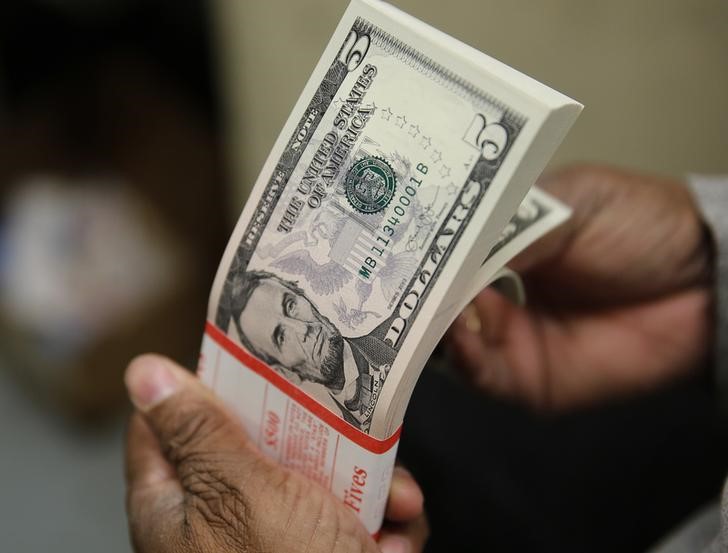Asia tech stocks slide tracking Wall St losses amid AI doubts, govt. uncertainty
By Peter Nurse
Investing.com - The dollar traded higher Wednesday, with this safe haven boosted by concerns rising energy prices will translate into higher inflation, prompting the Federal Reserve to promptly tighten its monetary policy.
At 3:05 AM ET (0705 GMT), the Dollar Index, which tracks the greenback against a basket of six other currencies, traded 0.2% higher at 94.188, just below the 94.504 level seen last week, its highest level since September 2020.
USD/JPY rose 0.3% to 111.72, at a one-week high, EUR/USD fell 0.1% to 1.1581, just above last week’s 14-month low of 1.1563, GBP/USD fell 0.1% to 1.3611, while the risk sensitive AUD/USD fell 0.4% to 0.7261.
Also of interest, NZD/USD fell 0.5% to 0.6925 after the Reserve Bank of New Zealand lifted its official cash rate for the first time in seven years earlier Wednesday, and hinted at further interest rate hikes to come in order to tame rising inflation. That came a day after Romania became the latest central bank in emerging Europe to raise rates.
This hawkish tone has added to expectations that the Federal Reserve will begin tapering asset purchases this year and prepare for an early increase in the rock-bottom pandemic-era interest rate settings.
The dollar also has benefited from climbing bond yields as investors fretted about the lack of agreement in U.S. Congress over the country’s debt ceiling and the potential for a default.
In addition there remains concerns about the Chinese property sector, the news that another Chinese property developer, Fantasia, has also failed to repay $205 million of bonds, suggesting concerns extend well beyond Evergrande.
“Ultimately, this is likely a reminder that the headwinds to risk sentiment stemming from China’s property sector are far from over,” said ING analysts, in a note. “In FX, we think this will continue to provide reasons not to turn any bearish on the dollar.”
Attention now turns to the release of the ADP private payrolls release later Wednesday, as a guide to Friday’s important official employment report.
The ADP number is expected to rise by 428,000 jobs in September, up from 374,000 jobs the previous month, while Friday’s nonfarm payrolls are seen rising by 488,000 jobs, up from 235,000 jobs added the previous month.
